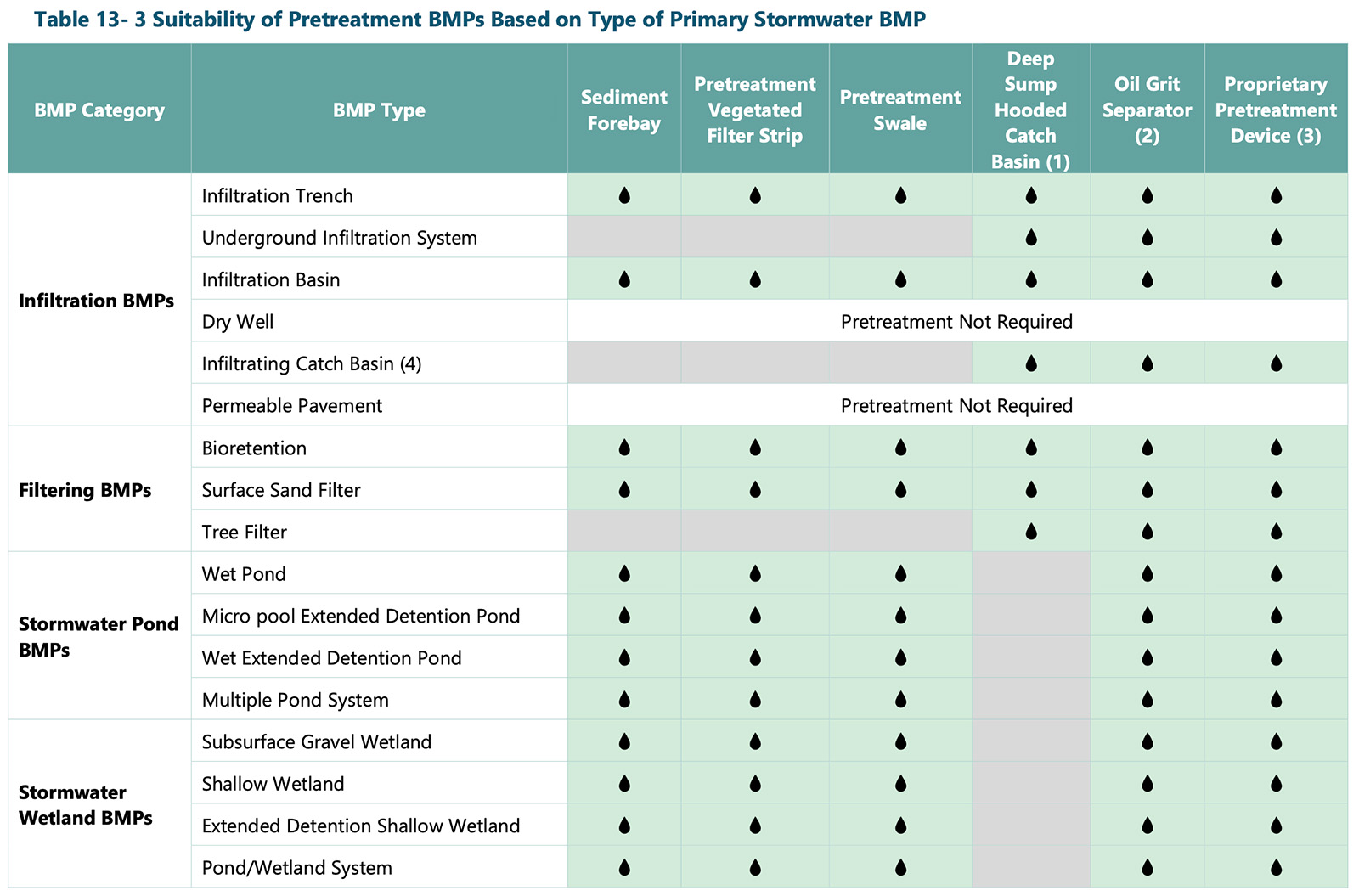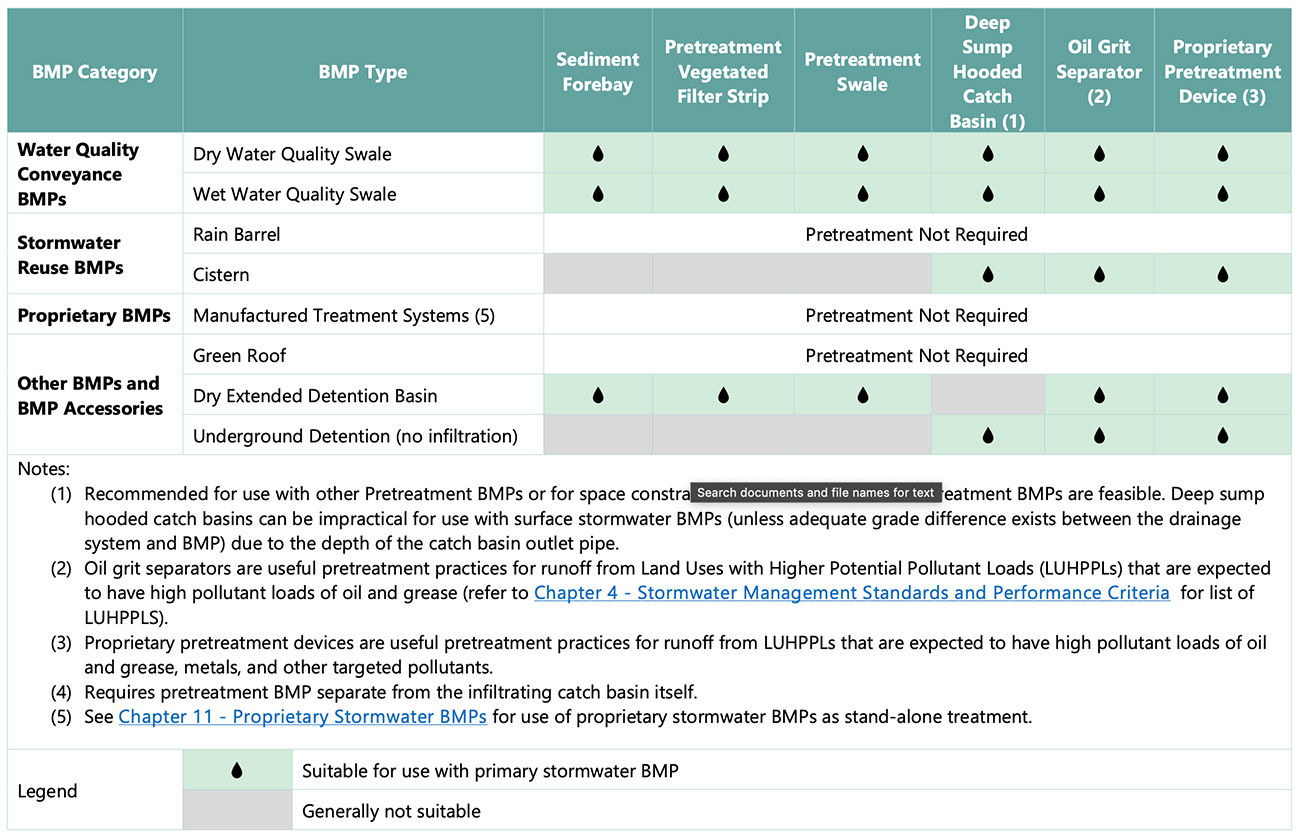This page provides a general overview of pretreatment BMPs. Click on the tabs on the navigation menu above to learn more about specific pretreatment BMP types.
General
Pretreatment BMPs remove coarse sediment and debris (e.g., trash, leaves, floatables) upstream of other structural stormwater BMPs, while consolidating maintenance to a specific location. Properly designed Pretreatment BMPs help preserve the pollutant removal efficiency, extend the service life, and reduce maintenance costs of the main stormwater BMP.
Pretreatment BMPs can be designed as an integral component of another BMP, such as a sediment forebay within another practice, or as a separate structure preceding the main
stormwater BMP, such as an upstream proprietary device. Pretreatment BMPs can also be configured as on-line or off-line. On-line systems are designed to provide pretreatment for the entire design volume or flow rate and safely convey larger flows. Off-line systems are typically designed to receive a specified volume or flow rate, such as the design Water Quality Volume (WQV) or Water Quality Flow (WQF), and bypass larger flows. A flow diversion structure (flow splitter) is used to divert the design volume or flow rate to the off-line stormwater BMP. The Inlet and Outlet Controls section addresses the design of flow diversion structures.
Pretreatment BMPs are only suitable as pretreatment for other stormwater BMPs and cannot be used alone to meet the retention or treatment performance criteria, with the exception of proprietary devices. When designed to achieve the minimum pollutant load reductions described in Chapter 4 - Stormwater Management Standards and Performance Criteria, proprietary devices can be used for stormwater treatment.
Access Considerations
The performance of pretreatment practices is dependent on regular maintenance. Pretreatment practices should be designed for easy maintenance. Maintenance access must be carefully considered and incorporated into the design. Refer to the general maintenance considerations provided in Chapter 7 - Overview of Structural Stormwater Best Management Practices, which also apply to Pretreatment BMPs.
Selection
Pretreatment BMPs should be selected based on the following factors:
- The downstream stormwater BMP
- Site-specific constraints (e.g., available space, topography, accessibility)
- Flow type (e.g., sheet flow or concentrated flow)
- Required pretreatment capacity.
The tables below provide a general summary of the applicability of different types of Pretreatments BMPs and can assist in selecting an appropriate pretreatment practice. Multiple pretreatment BMPs may be used, as necessary, to enhance pretreatment effectiveness.


